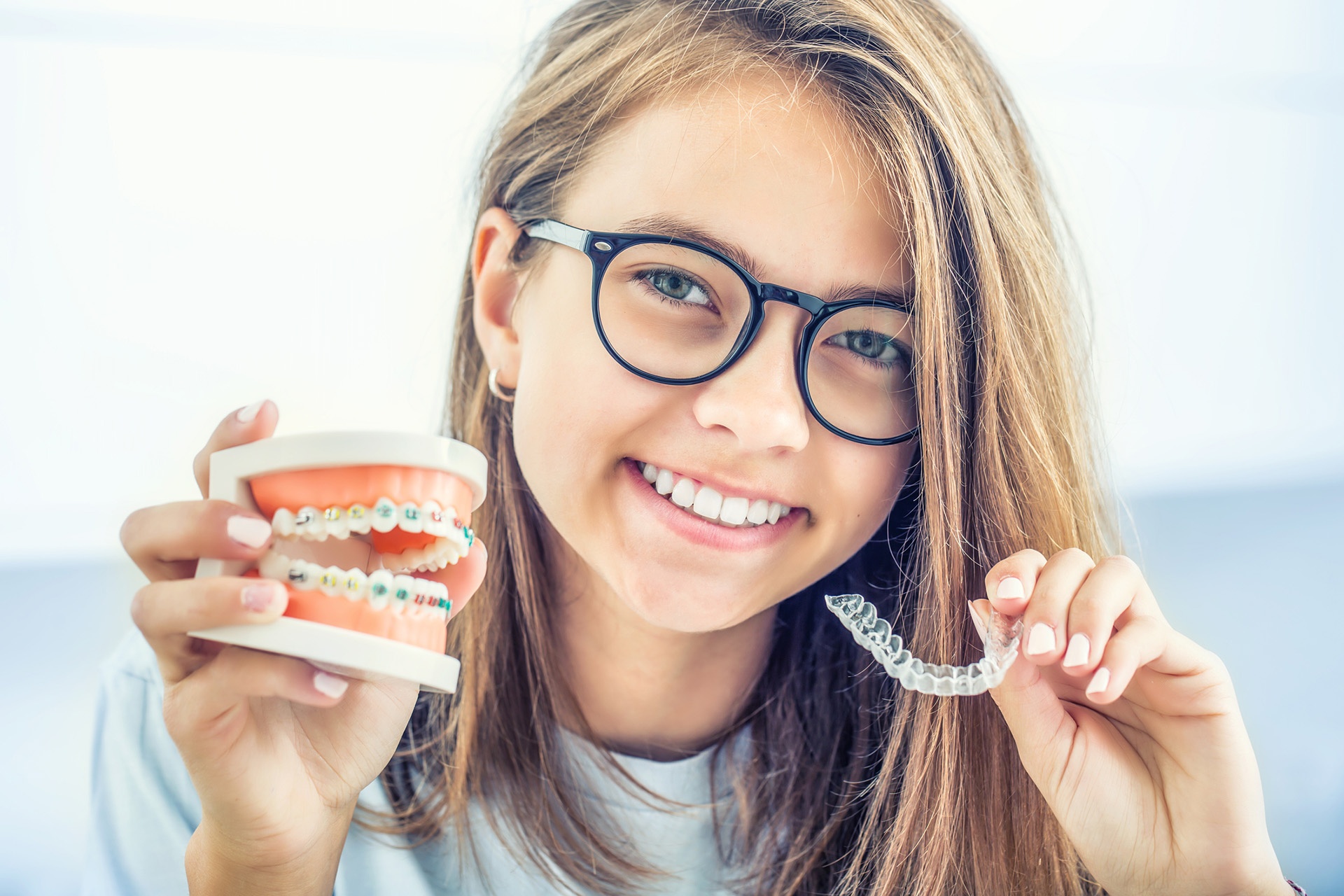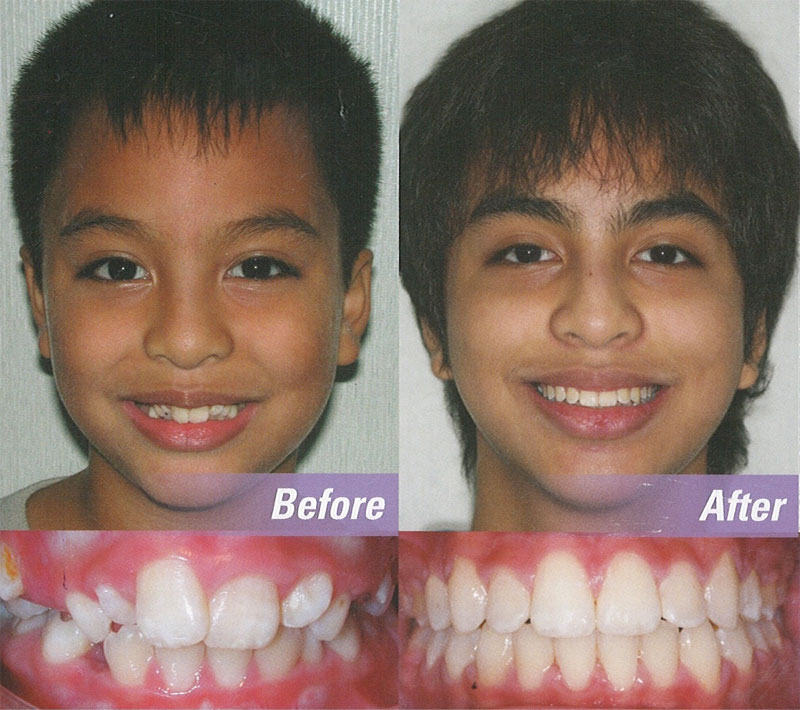Every Little Thing You Required to Know Concerning Braces, Aligners, and Retainers
Orthodontic treatments such as retainers, aligners, and dental braces play a vital duty in attaining a straighter and healthier smile. From traditional dental braces to modern-day aligners, there are numerous alternatives available to cater to individual needs and preferences.
Sorts Of Orthodontic Therapies
Orthodontic therapies include various techniques focused on fixing and aligning teeth for enhanced oral health and wellness and looks. The most typical sort of orthodontic therapy is standard braces, containing metal brackets bound to the teeth and attached by wires. These dental braces progressively shift teeth into the preferred placement through routine changes by an orthodontist.
Another prominent choice is ceramic dental braces, which are less obvious than steel dental braces due to their clear or tooth-colored brackets. Lingual braces are connected to the rear of the teeth, making them basically unnoticeable from the exterior. For those looking for an extra discreet option, clear aligners like Invisalign offer a detachable and clear alternative to conventional braces.

Pros and Disadvantages of Dental Braces
When thinking about orthodontic therapy choices, it is necessary to evaluate the advantages and drawbacks of braces. One of the primary benefits of dental braces is their dependability in providing exact and foreseeable outcomes over a defined treatment period.
However, there are some downsides to take into consideration when choosing for dental braces. The most common concerns consist of pain and prospective mouth sores during the first modification period. Upkeep can likewise be tough, needing frequent oral brows through for modifications and routine cleaning to avoid food bits from getting trapped. Another visual consideration is the visibility of typical metal dental braces, which may impact the user's self-confidence during therapy. Regardless of these disadvantages, the proven performance of braces in attaining ideal oral positioning frequently outweighs the disadvantages for numerous people - orthodontics.
Advantages of Aligners
An increasingly popular alternative to traditional braces, aligners offer numerous benefits in orthodontic treatment. Aligners are also removable, allowing patients to easily brush and floss their teeth, leading to better oral hygiene during treatment contrasted to typical dental braces.
Moreover, aligners generally require less brows through to the orthodontist for changes, as contrasted to braces, which can be a practical element for people with active schedules. The therapy procedure with aligners is typically more comfortable, as there are no metal brackets or wires that might create inflammation to the mouth. Furthermore, aligners can commonly accomplish results in a much shorter period than standard braces, depending on the complexity of the orthodontic concerns being attended to.

Value of Retainers
The value of retainers in preserving orthodontic treatment outcomes can not his explanation be overemphasized. Retainers play an important function in maintaining the outcomes achieved through dental braces or aligners. After the initial stage of orthodontic click for more info therapy, where aligners or dental braces are used to straighten out teeth and proper bite problems, retainers are important for preventing the teeth from changing back to their original position.
Retainers aid to support the teeth in their new straightened position, allowing the sustaining structures in the mouth to adjust to the modifications. Without correct retainer wear, there is a danger of relapse, where the teeth progressively move back in the direction of their pre-treatment placement. This can undo all the progression made throughout the orthodontic treatment, resulting in the demand for extra intervention.
It is advised to wear retainers as routed by your orthodontist to preserve the outcomes of your treatment in the lengthy term. Commonly, retainers are initially used full time and afterwards transitioned to nighttime wear once the orthodontist identifies it is appropriate. Constant retainer usage is essential to ensuring an enduring, gorgeous smile.
Maintenance Tips for Orthodontic Equipments
Correct treatment and maintenance of orthodontic home appliances are necessary for ensuring their efficiency and durability. Braces, aligners, and retainers need diligent attention to keep them in ideal condition throughout the treatment process. When wearing braces, it is vital to keep excellent dental health by cleaning after every dish and flossing day-to-day to stop plaque build-up. Avoiding hard, sticky foods can also prevent damage to the dental braces. Routine examinations with your orthodontist are necessary to make certain that the braces are adjusted appropriately and are functioning as planned.

Final Thought
To conclude, resource orthodontic therapies such as braces, retainers, and aligners play an essential role in dealing with oral issues and boosting general oral wellness. Each treatment option has its very own advantages and disadvantages, and it is very important to adhere to correct upkeep tips to make certain the efficiency of the appliances. Whether it is dental braces for more extreme situations or aligners for an extra discreet option, talking to a dental specialist will help identify the most effective treatment prepare for private demands.
Orthodontic treatments such as dental braces, aligners, and retainers play a vital role in accomplishing a straighter and healthier smile.Another preferred option is ceramic braces, which are much less obvious than steel braces due to their tooth-colored or clear brackets.In some situations, after dental braces or aligner therapy, retainers are necessary to preserve the freshly aligned setting of the teeth. After the first stage of orthodontic treatment, where braces or aligners are made use of to straighten out teeth and appropriate bite problems, retainers are essential for stopping the teeth from changing back to their initial position.
In final thought, orthodontic therapies such as retainers, braces, and aligners play a critical role in correcting dental problems and enhancing general dental wellness. - orthodontics